It’s estimated that about 2000 aboriginals lived in the Kakadu area before Europeans arrived, the Bininj in the north and Mungguy in the south. Divided into about 19 different clan groups who spoke 12 different languages, this is part of the oldest living culture in the world dated at well over 50,000 years old.
Think about that for a minute, let it sink in.
We have the oldest living culture found anywhere in the world here in Australia, but it’s dying out. In fact as Europeans we’ve spent much of the last 300 years trying to wipe it out.
I chatted with a woman working at a caravan park within Kakadu for a little while and she brought up the subject, something about why should she be sorry for something that others did 300 years ago, after all, they weren’t really using the country anyway, they weren’t doing anything. Wow, how do you counter that mentality. If an alien race came to our planet and decided that humans weren’t really using the planet based on their own standards, then it’s alright for them to just move in and take over the planet? After all, we were just an uncivilized race, not really using it. What rights did we have to this planet?
My response to her was something along the lines of “Yeah, 50,000 odd years living here and what did they do? 300 years and we’ve managed to bugger the place pretty well.”
As a European growing up in Australia, I was always taught that aboriginal people were a nomadic hunting and gatherer people with no agriculture and no permanently lived in dwellings or permanent settlements. However more recent evidence suggests that this could be far from the truth, with over 19 different plants cultivated by at least 12 different indigenous groups. And not just on a small haphazard scale, early explorers recorded “yam fields of square kilometres in extent. One tract “extended east and west as far as we could see””.
Major Thomas Mitchell recorded in 1846 that “dry heaps of this grass, that had been pulled expressly for the purpose of gathering the seed, lay along our course for many miles” along the Narran River.
Augustus Gregory in south-west Queensland recorded in 1864: “Fields of 1,000 acres [400 hectares] are there met with growing this cereal. The natives cut it down by means of stone knives, cutting down the stalk half way, beat out the seed leaving the straw which is often met with in large heaps.”
There are many accounts of extensive and often intensive agriculture from a variety of explorers, drovers, pioneers and the like, and not just plant crops but also animals. Aquaculture of fish and eels have been carried out for thousands of years, vast areas of channels, dams and traps have been recorded in many areas of Australia along with large permanent settlements for hundreds of people consisting of domed huts built from solid wood and covered in clay. There’s evidence of food storage and trading on a large scale, storage of tons of grain in specialized buildings.
This is not just a hunter and gatherer society. Yes in some areas people followed the food sources around with the seasons, but also in many areas where food sources or fertility allowed it, there were complex permanent villages and communities.
So why have we been taught a different version of history? Why is it commonly believed by so many that indigenous Australians were only ever a simple nomadic hunter gatherer society? Well it makes a country easier to occupy doesn’t it? I mean hey, in my life time they still thought it right and ok to forcibly remove children from their parents.
OK, enough of my rant, as this doesn’t even really fit for kakadu because they were fairly nomadic up here. But that doesn’t mean they kept traveling to different places, they’d travel back and forth between the same places over and over with the seasons. Not unlike many in our modern Australian culture. How many grey nomads travel north for the winter, then back south for the summer each year? Lots, I know I counted the traffic for a while as I was driving north to Darwin. On one section of road I passed 106 caravans/motorhomes/campers, 24 cars, 4 trucks, 3 bicycles and 2 motorbikes. Tourism is big industry up here.
Think outside the box a little, go and do some research and reading, I’d highly recommend a book “Dark emu black seeds” by Bruce Pascoe, very interesting reading.
Continuing on with Kakadu, and continuing on with my ranting, initially I found Kakadu a little confusing and a big let down. There are only really two ways into the park, from Darwin at the top, or Pine creek at the bottom end. From Darwin end, a few kilometres into the park there’s a small information board with a map. Then about another 50km into the park there’s a privately owned caravan park and fuel station where you can pay your $40 per person entry fee for the national park. Then you drive about another 50km and arrive at the township of Jabiru, where there’s a couple of resorts/caravan parks and a few other services, plus another information board. I drove around Jabiru for a bit then back out the main road and turned south where there was a sign to the Bowali visitor centre.
Great, ok a few kilometres down the road I found Bowali, the main information centre for Kakadu. The first building up the walk path was shut with barricades and danger tape all around it.
The fancy metal signs were lying on the ground, though I’m not sure what the flags were about. I wandered a little further as the outdoor information desk was busy with a queue of people.
There was a long verandah down to an unused building. Oh well, I’ll go to the toilet while I’m waiting.
Thats the most weirdly out of order urinal I think I’ve ever seen, how about the toilet?
Luckily there was one working toilet left.
This was crazy. The main information centre for Kakadu, one of Australia’s jewels, a draw card bringing people from around the world and probably the most expensive park in Australia at $40 a head. So I went and joined the back of the queue for the information. There was one poor woman who was doing a fantastic job supplying people with maps and information, highlighting places they should see and stay depending on their wants and needs. At over 20,000 square kilometres, you might imagine that she had a lot of information to cover for each visitor.
Freycinet national park down in Tassie is about 170sqkm and there were at least 4 staff working in the large building at the entrance to the park when I visited, and that’s just Freycinet down in Tassie, not Kakadu, an icon of Australia. One poor overworked woman at an outdoor desk on the verandah?
A couple of days later I spoke with a person caretaking one of the campsites and he told me of the cutbacks from the previous and current governments. Kakadu is one of only 3 national parks on the mainland run by the federal government, Uluru, Kakadu and Booderee in NSW, while all other parks are run by their respective state governments. I stayed in 3 different campgrounds in Kakadu and each one was run by different people.
I just did a bit of a search online and found that the government puts the camp ground management out to tender. One camp ground I went to was really dry and dusty, except for one spot where there was a caravan that had 2 sprinklers running all day and a lovely lush lawn. I pulled in here around lunchtime figuring I’d stay the night but the toilet blocks were all locked. That makes your job easier for cleaning toilets if you keep all the blocks locked up so that no one can use them during the day. I mean who cares how many people stay there, you were being paid for a 5 year tender to be there each year for the busy season, collect and bank the money, clean the toilets and maintain the facilities. Less people staying there, less work for them to do.
Another camp was being managed by a reasonably young couple who had a little tent city down in one corner, they had no idea about the wildlife when I asked them a couple of questions about animals I’d seen. How typical of our federal government to tender out things like this to just anyone. All the state run national parks have their camp grounds attended and maintained by the rangers, someone with a uniform, with local knowledge about where you are the plants and the animals. Not just someone who has a cushy job getting paid to camp out each holiday season.
It’s really starting to sound like I hated my time in Kakadu but I didn’t. Once I sorted out the main areas to visit and got essential information from the poor woman at Bowali I was set. First visit was up to the north up to cahills crossing, with the change in tide and water flowing over the crossing the crocs congregate. In the video above you see something happen at about the 25 second mark over at the far bank.
This croc wasn’t interested in fish.
He was watching the crazy humans. Crazy because even when the ranger came down and asked everyone to move back a couple of metres most of them just ignored him, a couple took one step back.
I saw at east three abandoned cars around the park, perhaps the government were putting it out to tender for someone to remove it. Might not be much left by then.
This northern area around Ubirr has some of the most stunning rock art and views out over the surrounding country.
Magnificent green plains as far as you can see in one direction and rugged rocky landscapes behind. I seem to see birds in rocks everywhere I go.
If you want to get to see a reasonable bit of Kakadu I think you really need to allow at least 3 or 4 days. Sites out here are fairly spread out and it takes time driving from one to the next. I was here for 4 days and could have easily stayed twice as long without seeing all the main sites.
My favourite place in the park was probably down the bottom end at Gunlom. It’s about 35km of horrible bone shaking road getting in there but once you arrive, wow, a magical little spot. Beautiful grass and trees for shade.
There’s a huge waterhole there with lush forest all around and a lovely white beach with cliffs for a back drop and water flowing down the cliff into the waterhole. You can climb to the top of the cliffs and swim in a number of different rock pools at the top or down here at the bottom where there’s known to be some fresh water crocs.
Climbing to the top of the falls I watched as 5 birds of prey flew around playing with each other. They had a leaf that they were fighting over, one would drop it and and another would snatch it out of the sky. Magnificent to watch, but I had to be cautious perched on rocks half way up a cliff trying to take photos.
Such a beautiful place, there’s a huge campground and if you’re as lucky as I was you get to sit on the beach as the sun sets watching the sun slowly turn the cliffs red. The water falling down the cliff produces a rainbow when the sinking sun hits it at the right angle. Birds in the lush green jungle surrounding you are becoming active as the day cools and the large birds of prey are still circling above, dipping and diving ever watchful.
Over all, although it may have sounded like I didn’t think much of Kakadu, I loved it, just a bit annoyed with the management of the place. When the NT government does such a great job of their other parks and especially the camp grounds. Shocking mozzies in some places, damn hot almost all the time, but beautiful, stunning and dramatic.

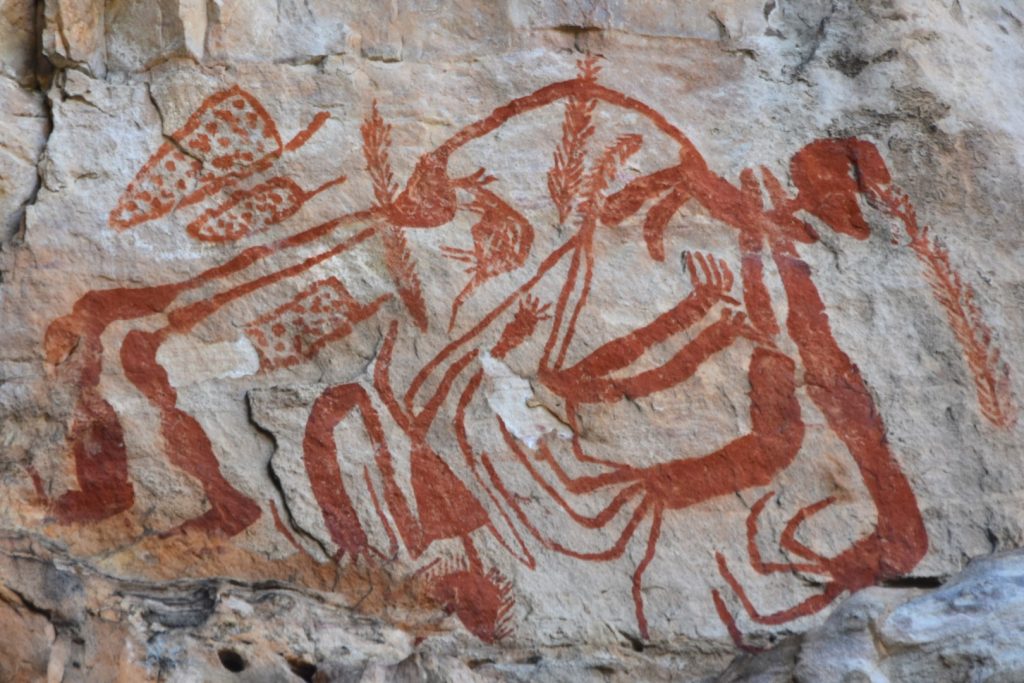
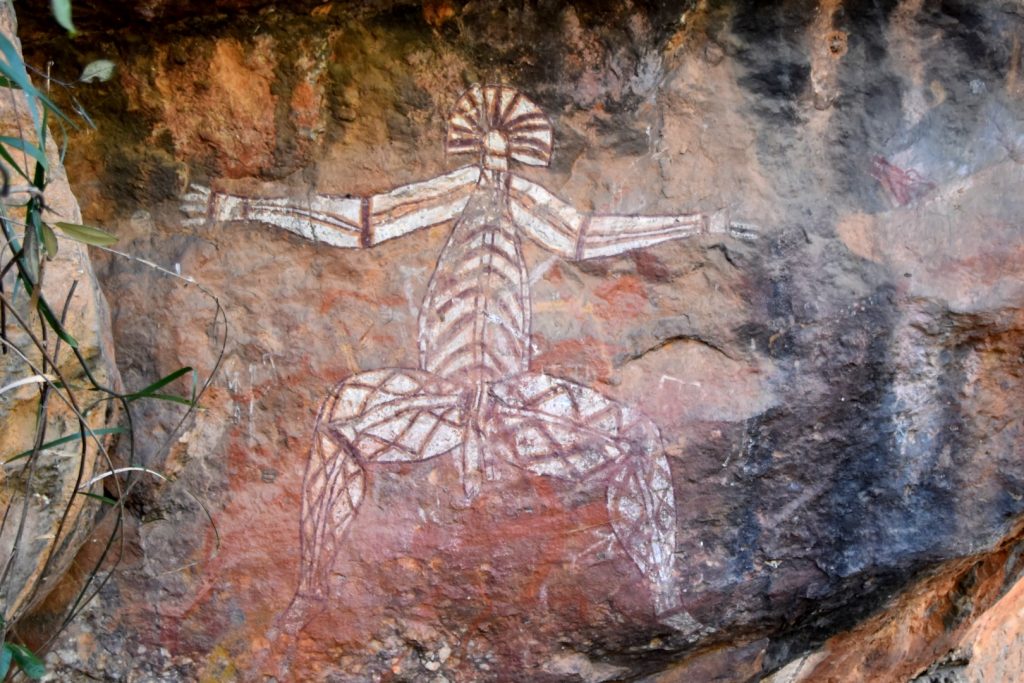
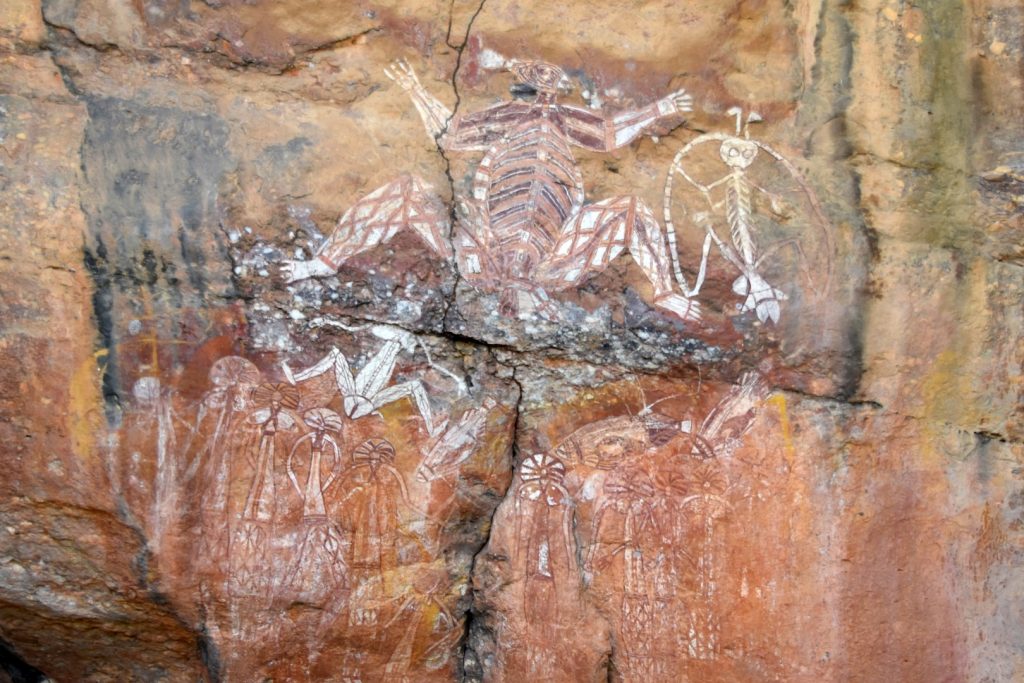

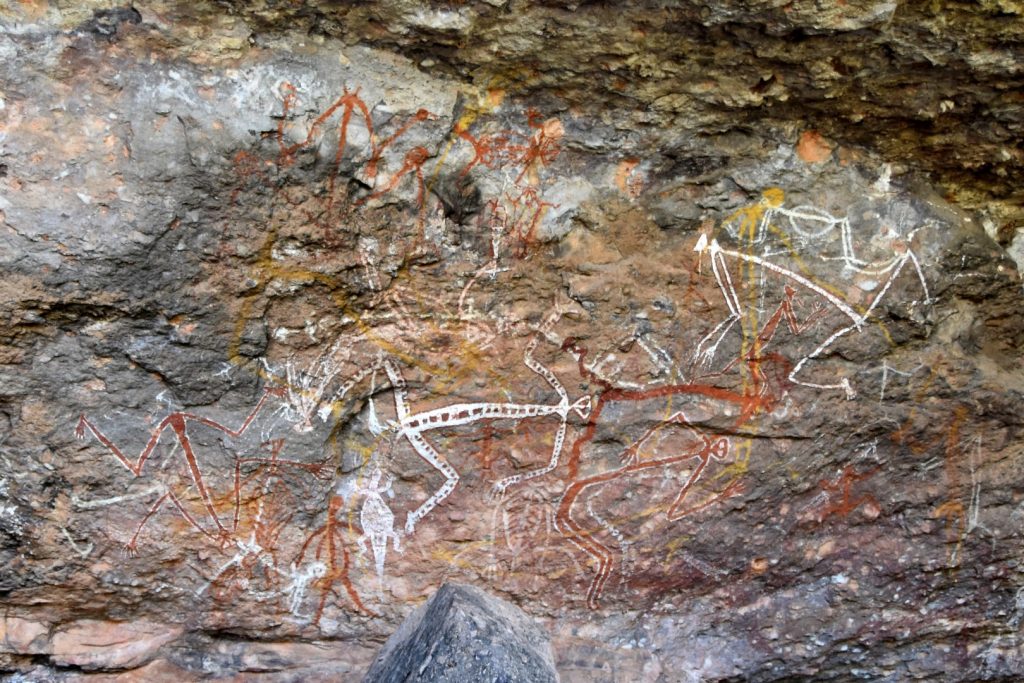
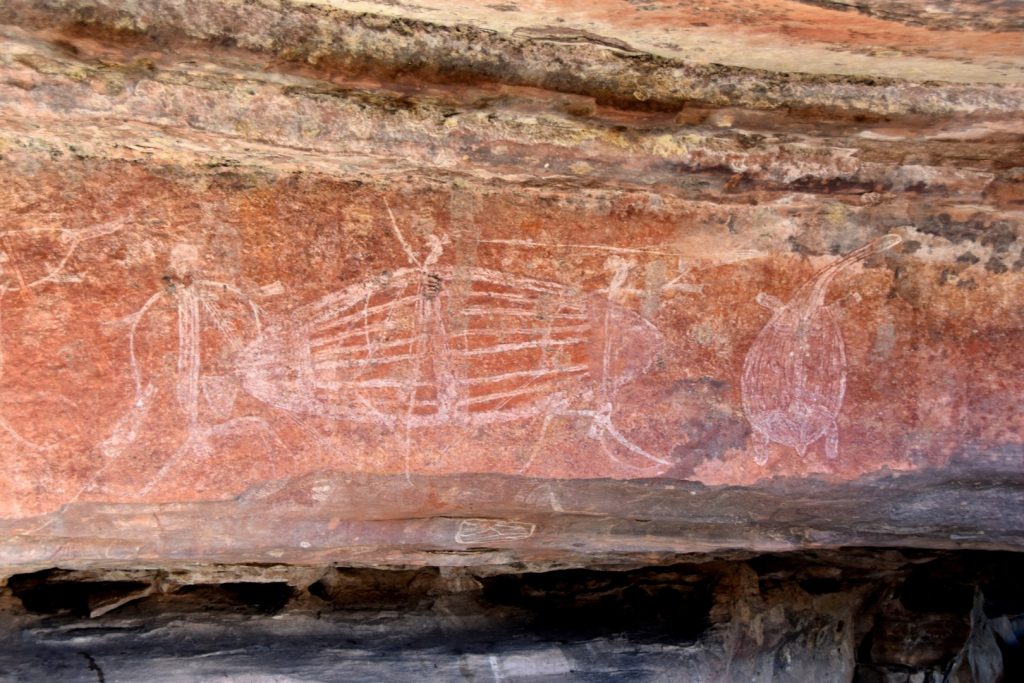
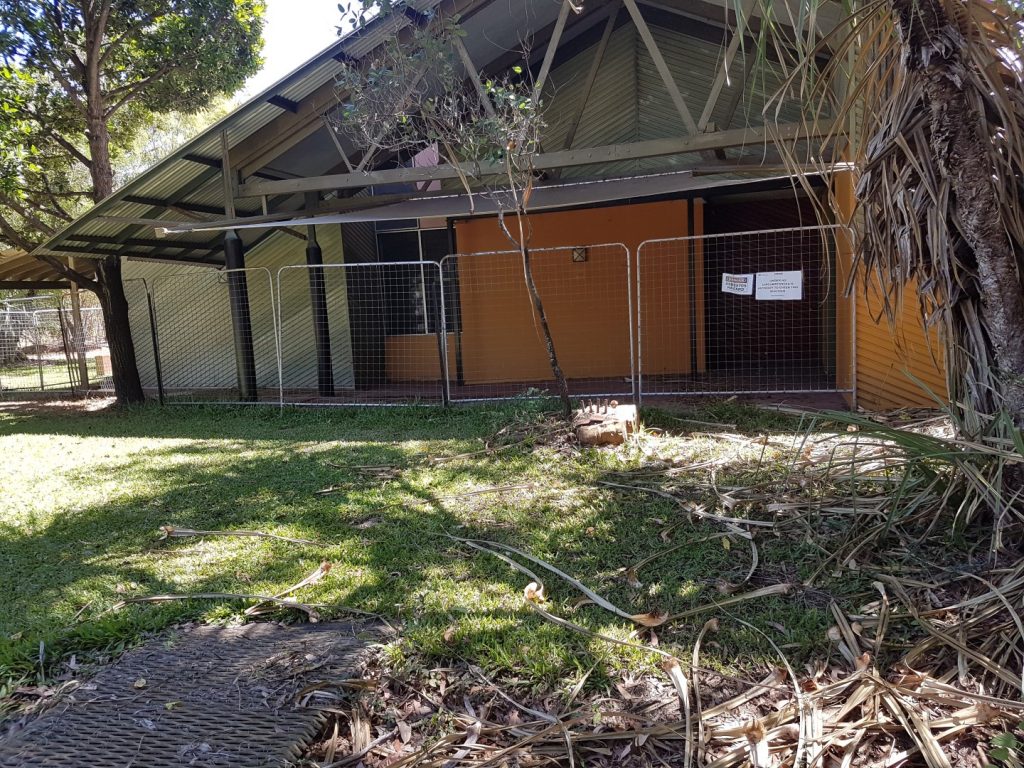
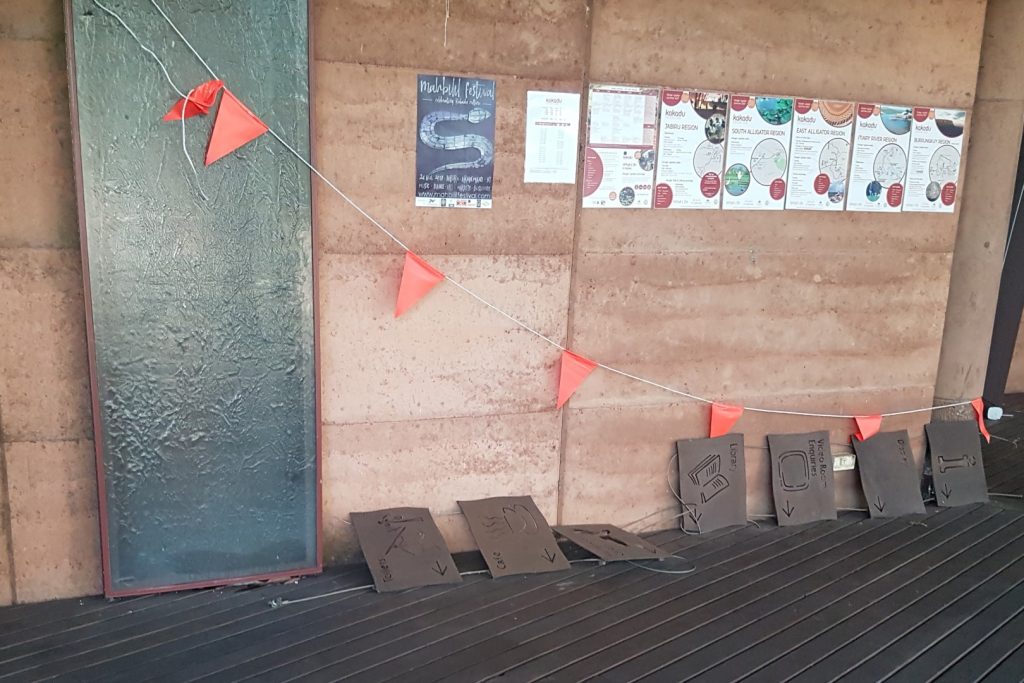
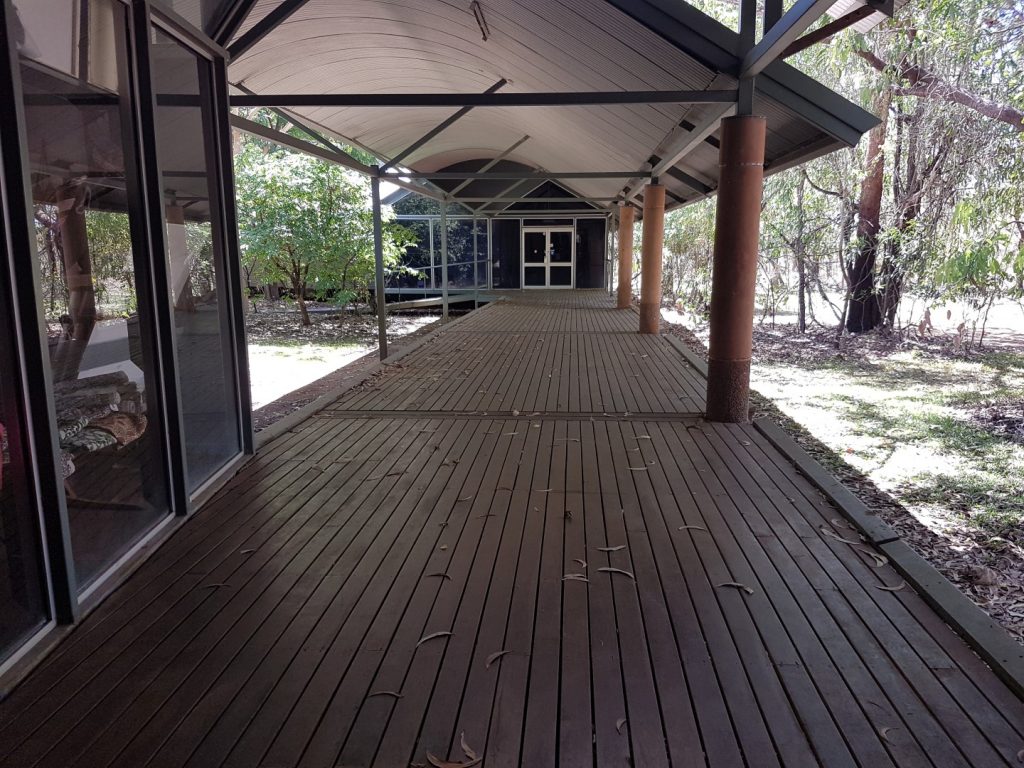
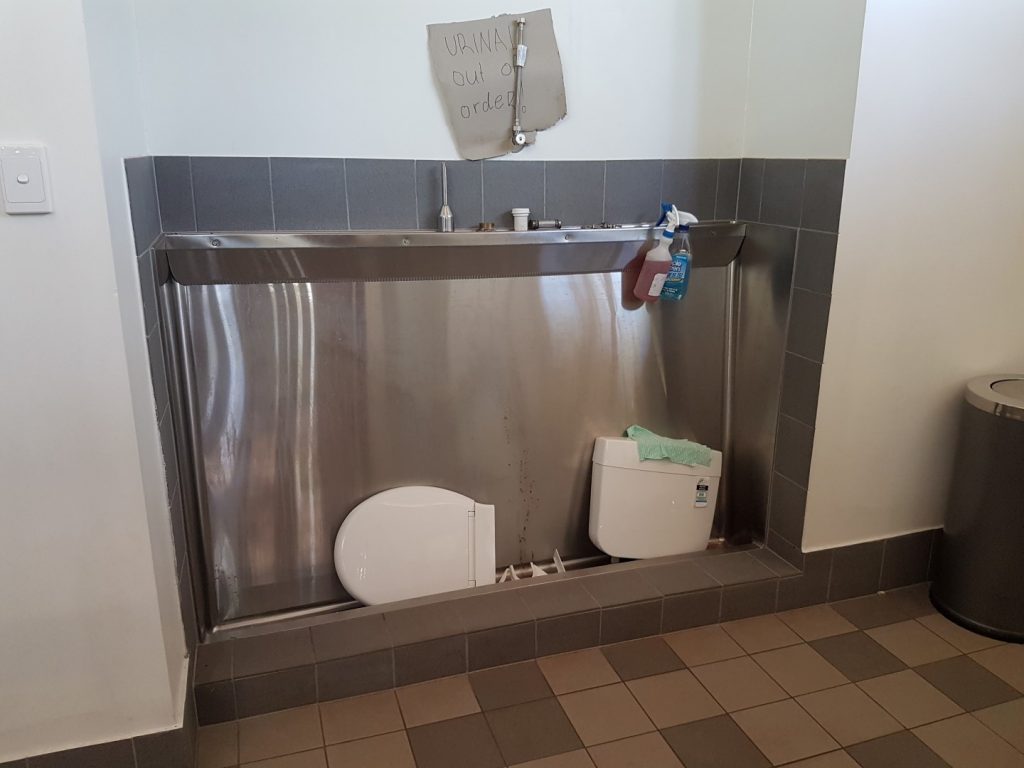
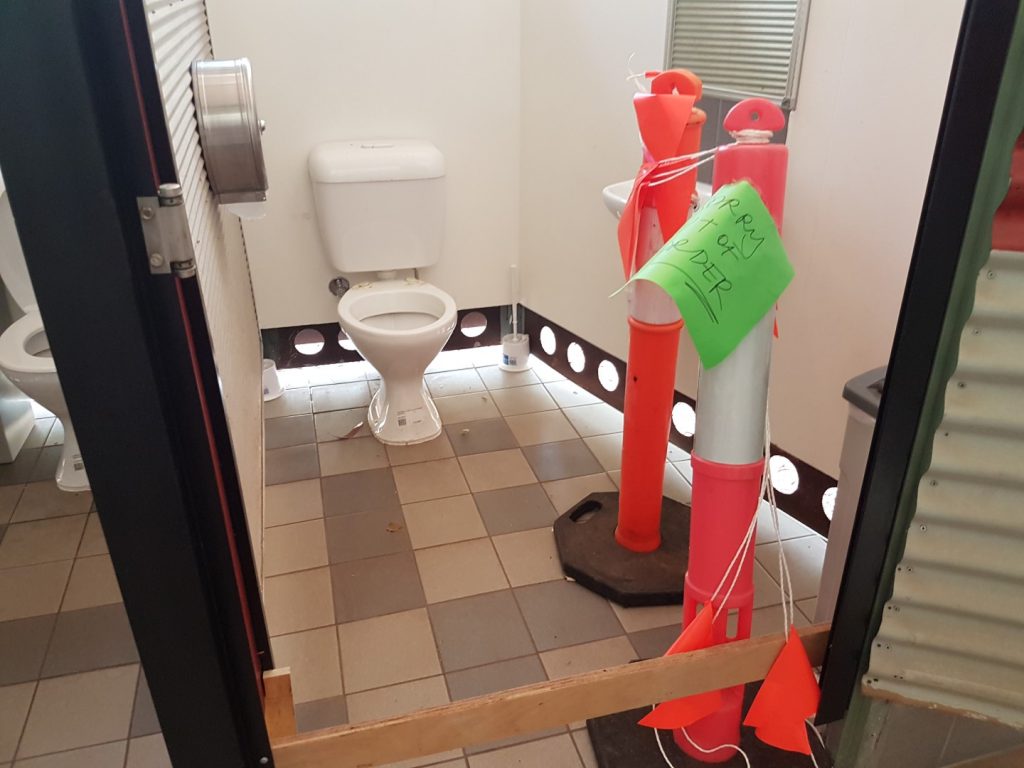
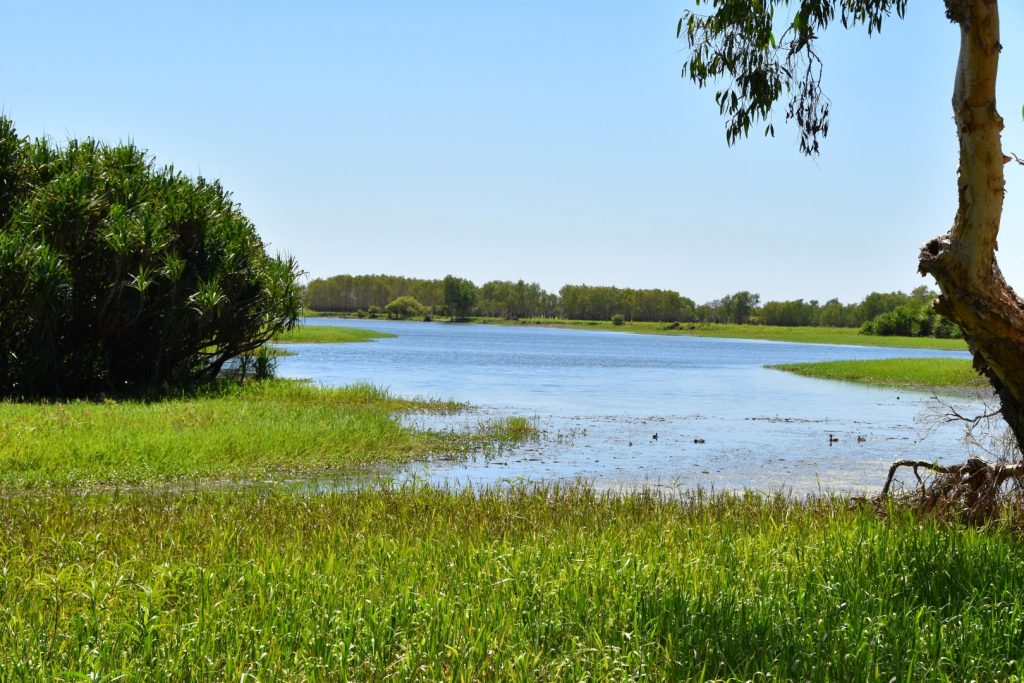
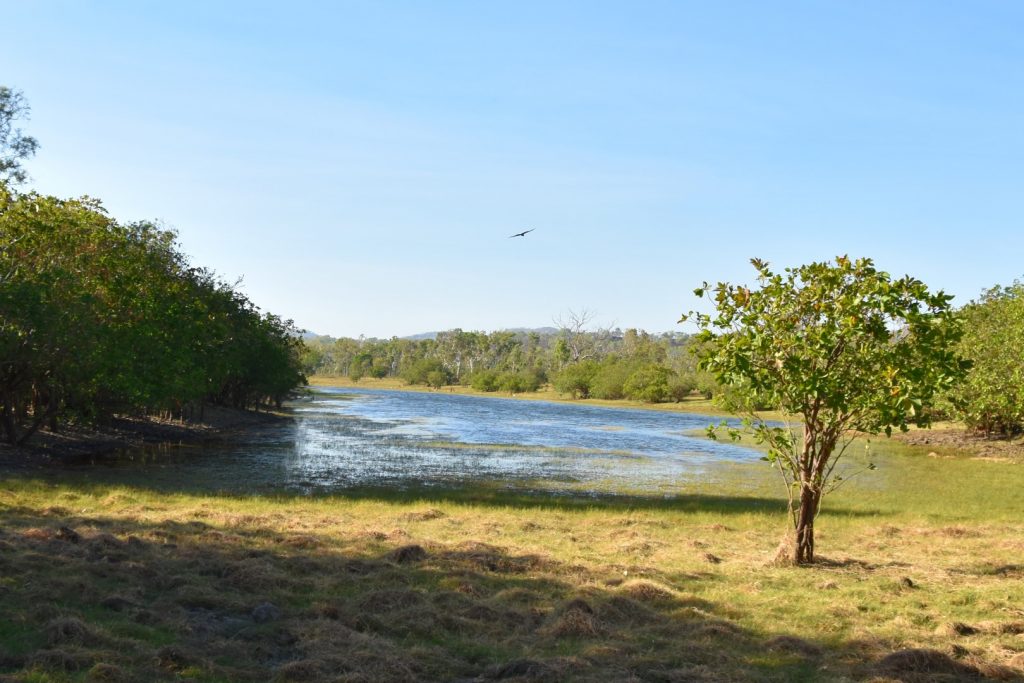

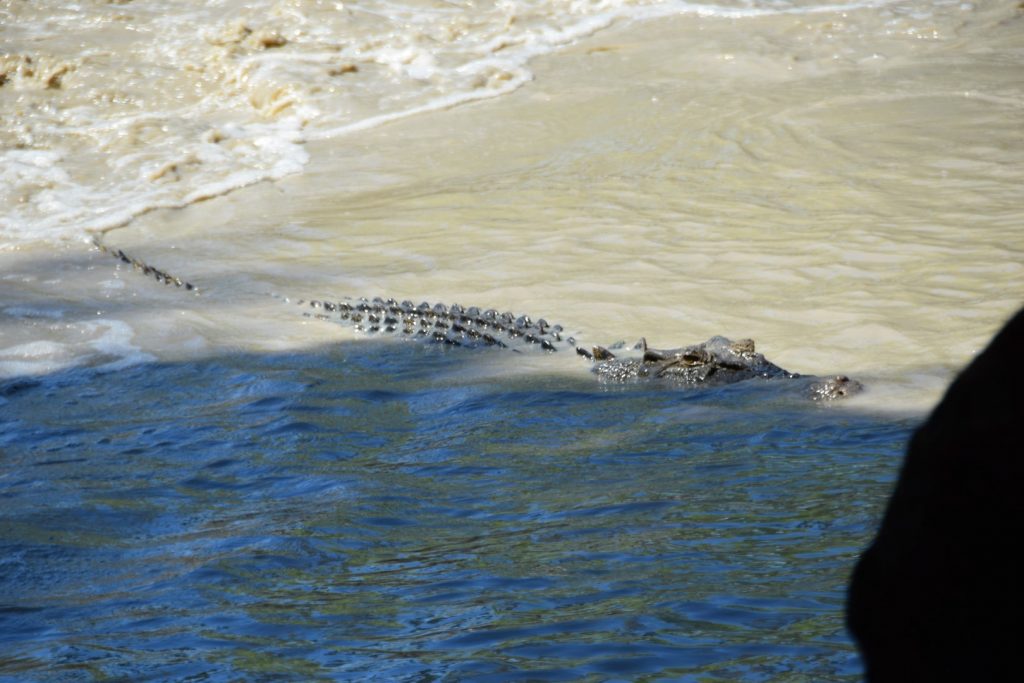
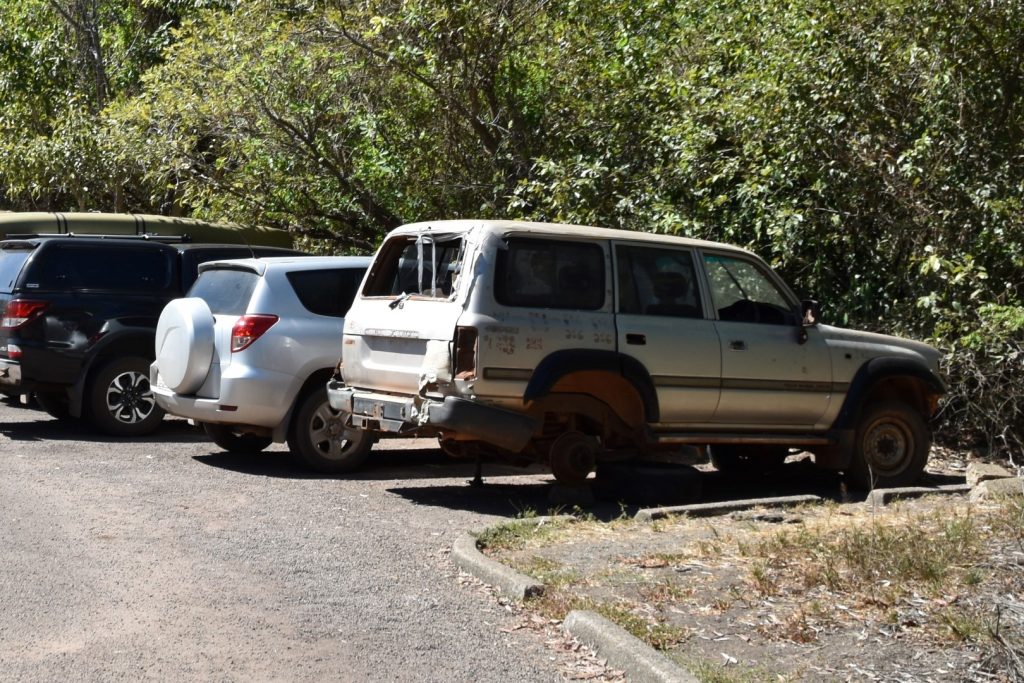
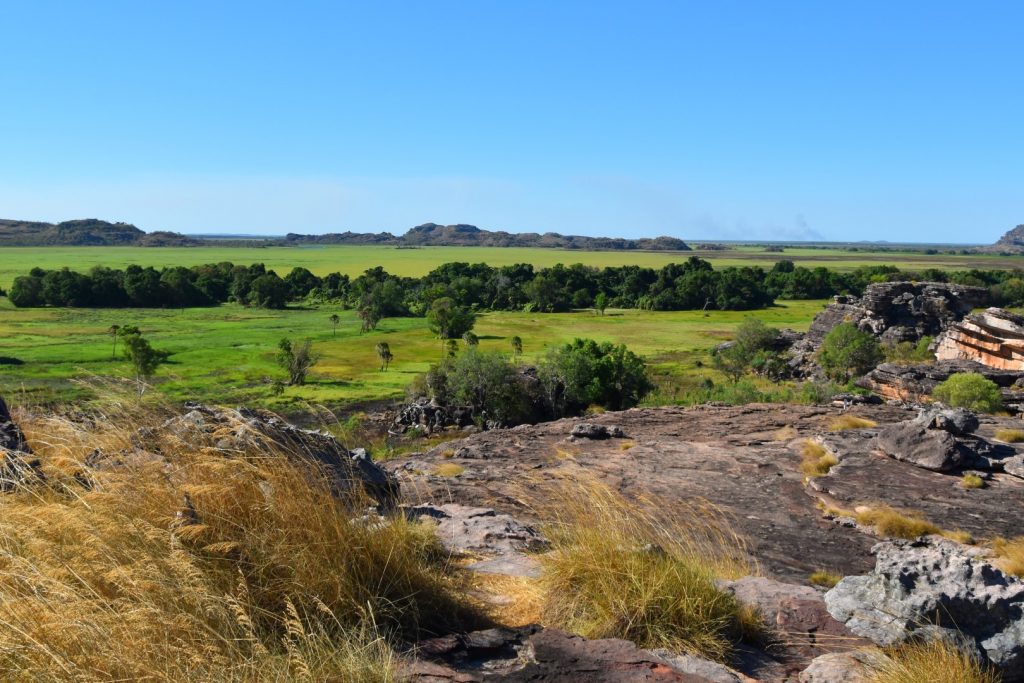
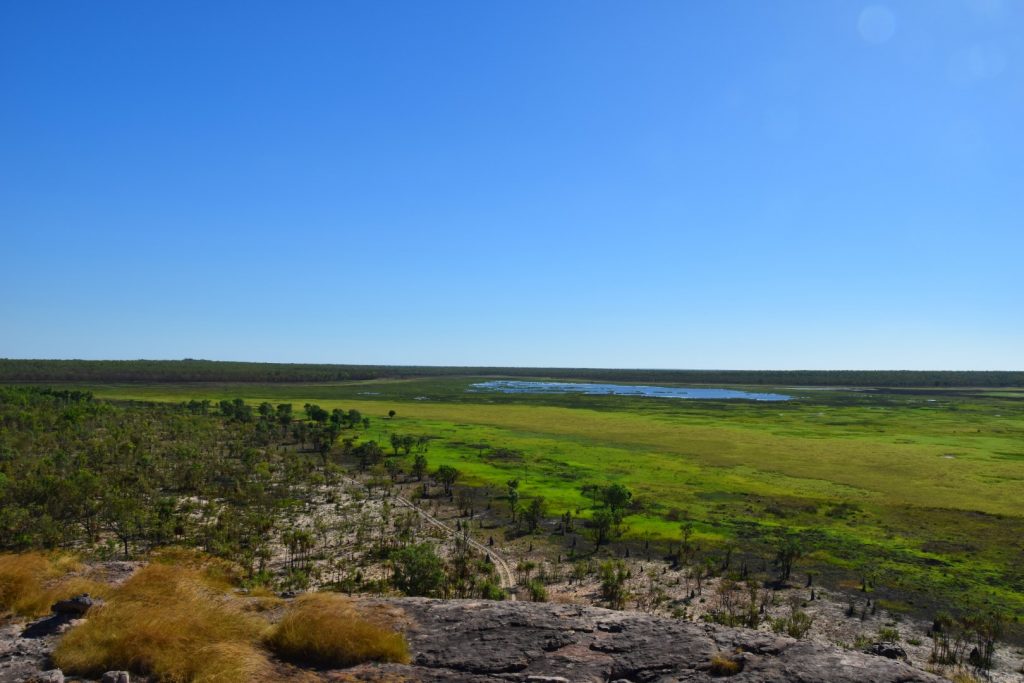
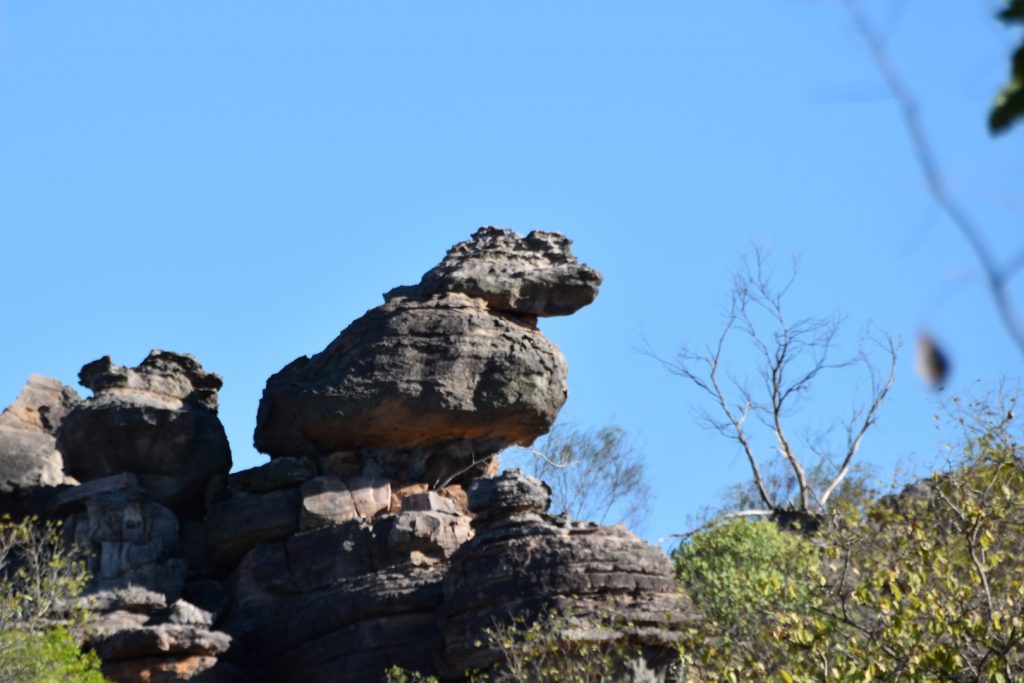

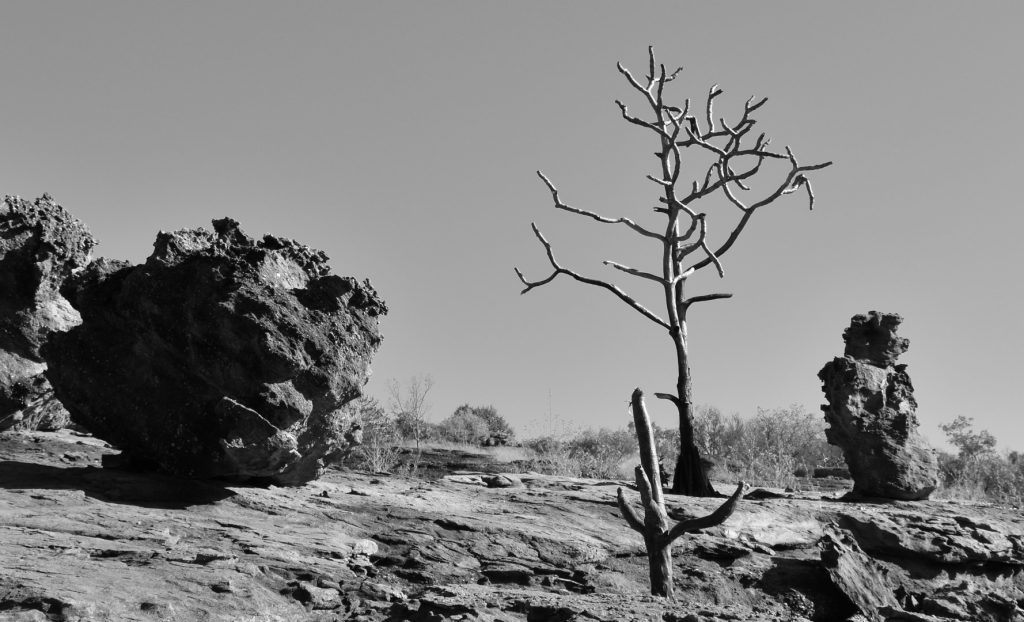
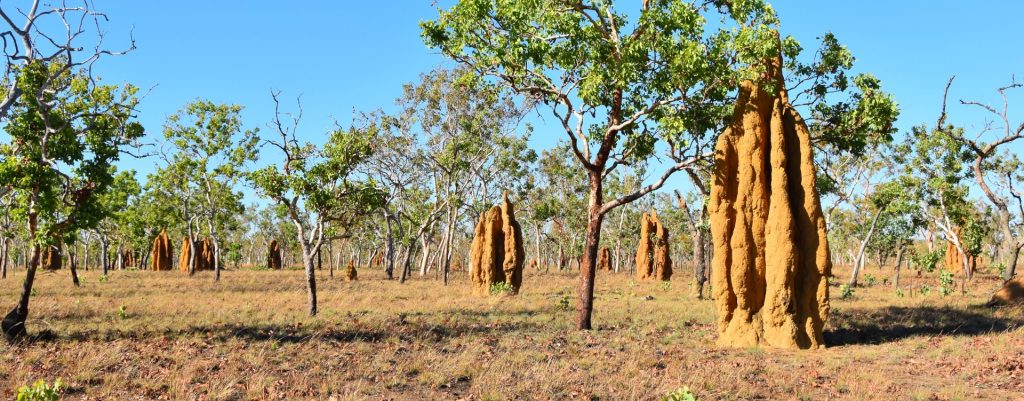
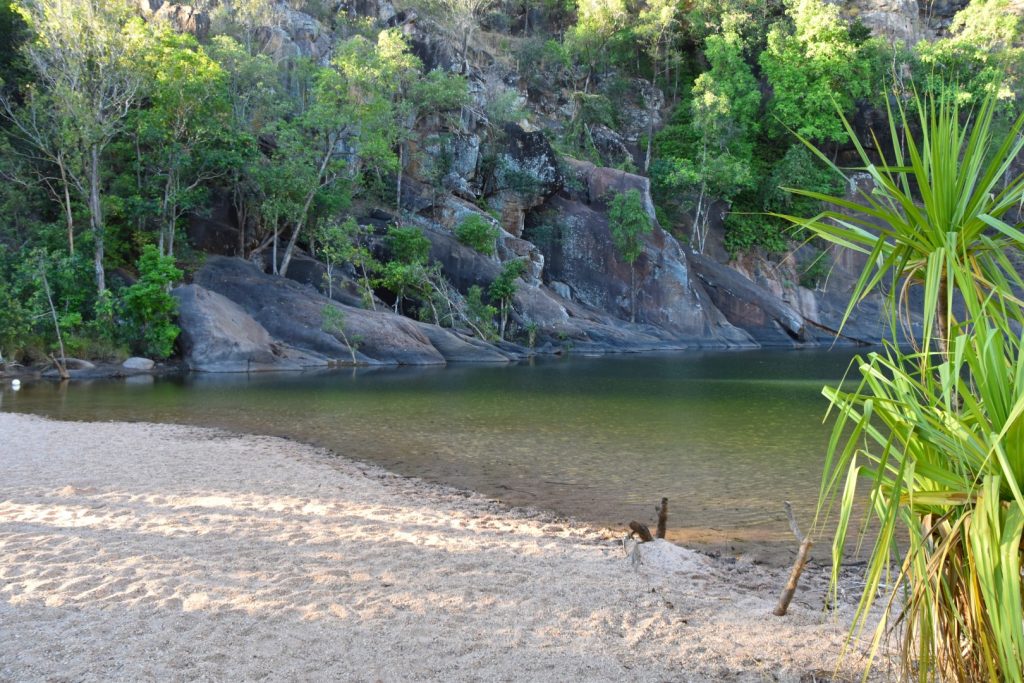
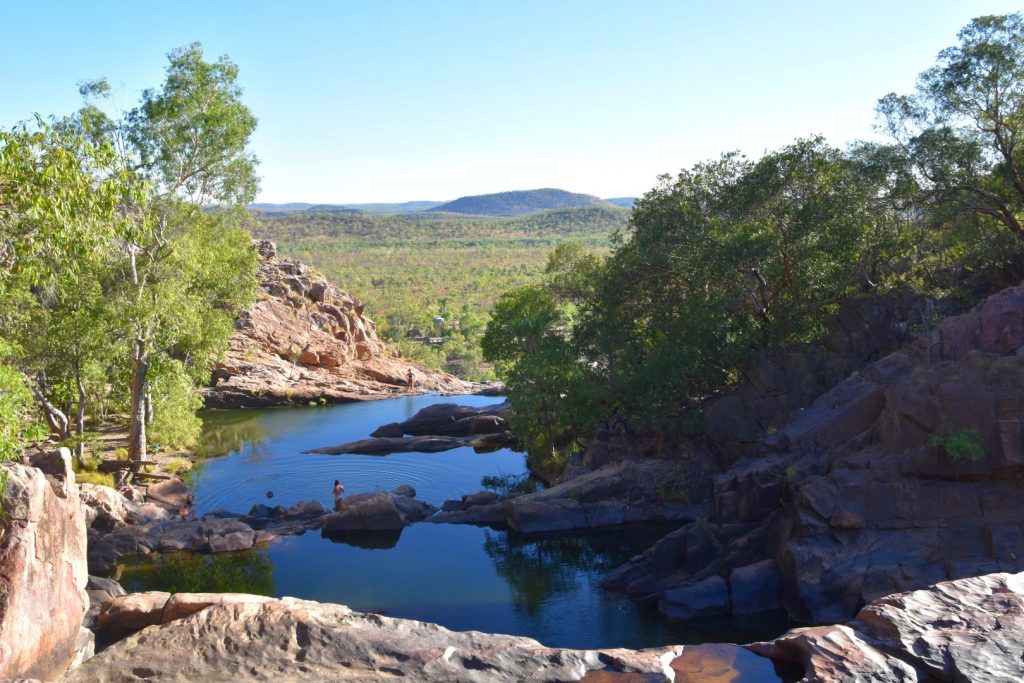
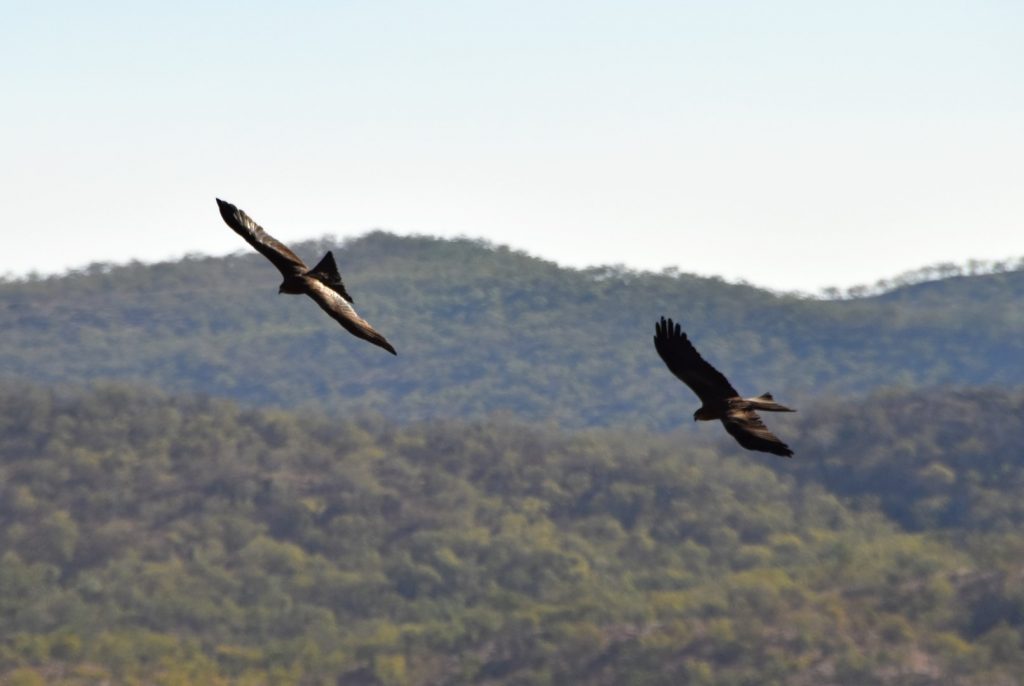
1 Comment
[…] Kakadu […]